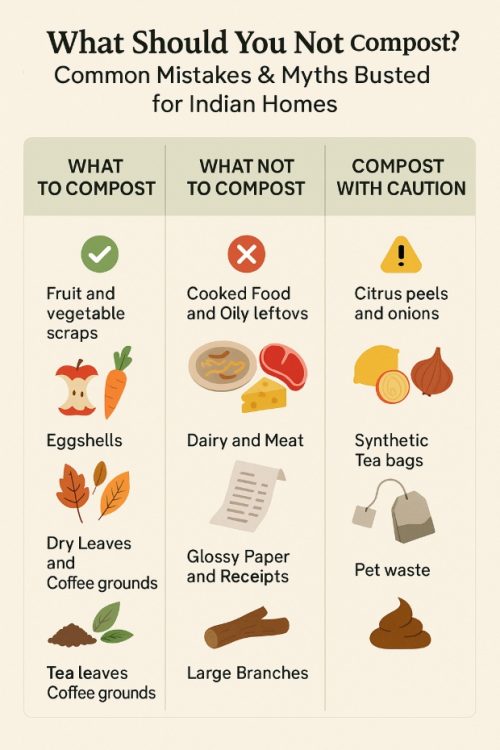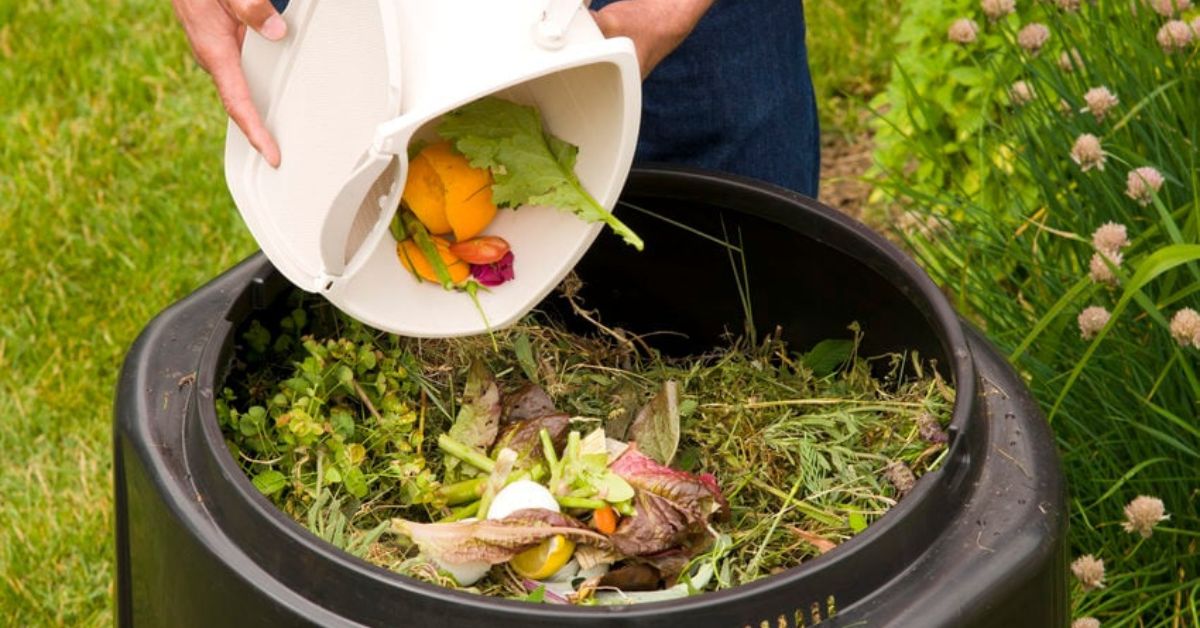Not Everything Biodegradable Belongs in Your Compost Bin — What NOT to Compost in Indian Homes
You’ve taken the leap into composting: kitchen waste is being collected, the bin is in place, and you’re hopeful for that rich, earthy black gold. But a few weeks in, the pile stinks, the fruit flies have moved in, and instead of crumbly compost, you’re left with a slimy mess.
And you’re left with an important question: ‘What went wrong?’
Composting, when done right, is one of the most rewarding habits a household can adopt. It reduces landfill waste, cuts down methane emissions, and gives you natural fertiliser for your plants. But it’s also easy to slip into some common mistakes, especially in Indian homes, where tropical weather, mixed waste, and spicy food scraps can complicate the process.
Let’s clear the compost air with this handy guide on what not to compost, common myths, and simple fixes to help you get it right.
What you should not compost
Not everything that’s biodegradable is compost-friendly, especially in our climate. Here’s what you should leave out:
- Cooked food and oily leftovers: These attract rats, maggots, and flies, especially in warm weather.
- Meat, fish and dairy: They decompose poorly in home composts and release foul odours.
- Glossy paper and receipts: These often contain synthetic coatings or toxic inks that contaminate compost.
- Coconut shells and large branches: They take far too long to break down unless shredded.
- Pet waste (cats and dogs): It can contain harmful pathogens not suitable for compost meant for gardens.
- Citrus peels, onion skins, garlic (in large quantities): These are fine in moderation, but too much can deter composting microbes and worms.
- Tea bags: Many Indian brands still use plastic mesh in their bags. Always check the label.
 It is important to know what goes into the compost for effective results. Infographic generated by ChatGPT.
It is important to know what goes into the compost for effective results. Infographic generated by ChatGPT.
Desi tip to remember: If your grandmother wouldn’t feed it to a cow, don’t put it in your compost.
Busted: Myths around composting
Let’s address some persistent myths that hold people back:
- ‘You need a garden to compost.’: Not true. Urban Indians are successfully composting on balconies and terraces using Bokashi bins, compost pots or even DIY buckets.
- ‘Compost smells horrible.’: Not always but only if something’s gone wrong in the composting process. A healthy compost pile smells like soil after the rain.
- ‘Dry leaves are a waste.’: Absolutely not. On the contrary, they’re compost gold! They provide the browns (carbon) needed to balance wet kitchen waste (greens).
- ‘Biodegradable plastic bags can be composted.’: Yes, but not at home. These require industrial composting units to break down properly.
Mistakes Indian households commonly make
Even with the best intentions, composting can go sideways. Here’s what to watch for:
- Imbalance between greens and browns: Too many food scraps and not enough dry matter causes odour and sludge.
- Dumping food straight from the plate: Masalas, oil, and salt interfere with decomposition.
- Lack of aeration: Compost needs oxygen. A weekly stir is essential.
- Plastic-coated packaging: Many ‘eco-friendly’ packs still contain layers of plastic and wax that don’t break down.
 By following the above steps, we can practice right composting practices. Picture source: Bio tech
By following the above steps, we can practice right composting practices. Picture source: Bio tech
Quick fixes to keep composting smooth
- Set up a two-bin system — one for dry waste, one for compostables.
- Keep a bag of dry leaves, shredded paper or sawdust handy to layer with food waste.
- Turn your compost at least once a week.
- Always cover fresh waste with dry material to keep insects away.
Before chemical fertilisers took over, composting was second nature in Indian households. Today, we’re simply reviving that wisdom, with a bit of urban adaptation. Composting isn’t just a sustainability trend, it’s a quiet, powerful way to rethink our relationship with waste. And it starts with knowing what not to compost.
Edited by Vidya Gowri Venkatesh
Sources
News